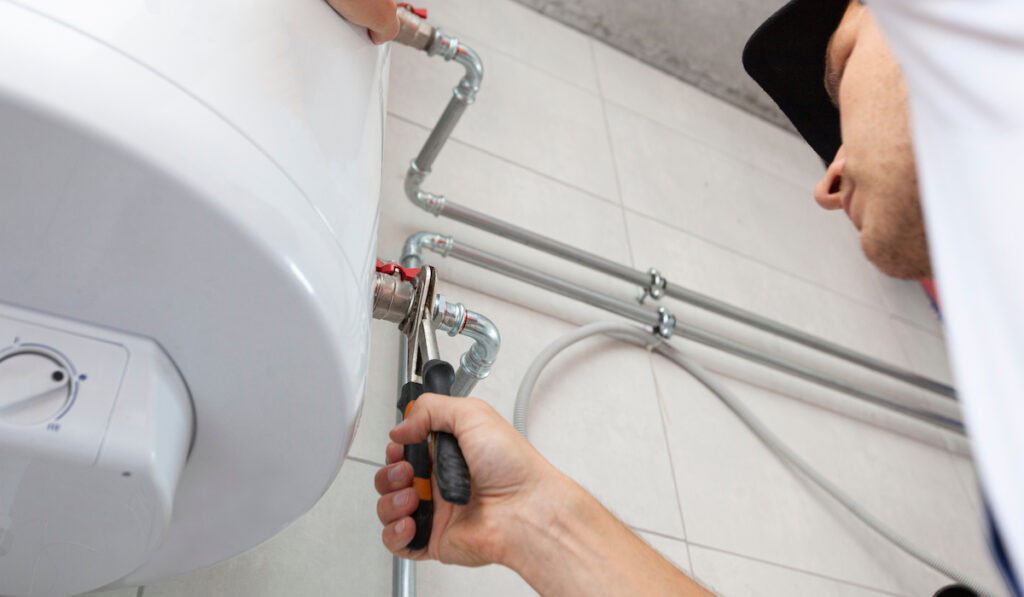Ways to Properly Maintain Your Home's Hot Water System
Ways to Properly Maintain Your Home's Hot Water System
Blog Article
Any individual seems to have their private rationale involving Tips on Maintaining a Water Heater.

Hot water is essential for everyday convenience, whether it's for a refreshing shower or cleaning meals. To guarantee your warm water system runs successfully and lasts much longer, routine upkeep is essential. This post supplies sensible pointers and understandings on just how to preserve your home's warm water system to stay clear of disturbances and pricey fixings.
Introduction
Preserving your home's hot water system may seem difficult, however with a few easy steps, you can guarantee it runs smoothly for years ahead. This overview covers every little thing from recognizing your hot water system to DIY maintenance tips and knowing when to call in professional aid.
Relevance of Preserving Your Hot Water System
Regular upkeep not just expands the life expectancy of your hot water system but also guarantees it operates effectively. Neglecting maintenance can cause reduced effectiveness, higher energy expenses, and even premature failure of the system.
Signs Your Hot Water System Needs Maintenance
Knowing when your hot water system requires focus can protect against significant concerns. Keep an eye out for indications such as irregular water temperature, unusual noises from the heater, or rusty water.
Understanding Your Warm Water System
Prior to diving right into maintenance tasks, it's useful to understand the basic parts of your warm water system. Normally, this consists of the hot water heater itself, pipelines, anode rods, and temperature controls.
Monthly Upkeep Tasks
Routine regular monthly checks can aid catch minor issues prior to they intensify.
Flushing the Water Heater
Purging your hot water heater eliminates sediment buildup, enhancing efficiency and lengthening its life.
Monitoring and Replacing Anode Rods
Anode rods protect against rust inside the storage tank. Inspecting and replacing them when worn out is critical.
Checking and Changing Temperature Setups
Changing the temperature setups guarantees optimum efficiency and security.
Do It Yourself Tips for Maintenance
You can execute a number of upkeep tasks on your own to keep your hot water system in leading problem.
Checking for Leakages
Frequently inspect pipelines and connections for leakages, as these can result in water damage and greater bills.
Evaluating Stress Alleviation Valves
Evaluating the pressure safety valve guarantees it functions properly and prevents extreme stress buildup.
Protecting Pipelines
Insulating hot water pipelines reduces warm loss and can conserve power.
When to Call a Professional
While do it yourself upkeep is advantageous, some problems need professional expertise.
Facility Problems Requiring Professional Help
Instances include significant leaks, electrical troubles, or if your hot water heater is regularly underperforming.
Routine Expert Upkeep Advantages
Expert upkeep can include complete examinations, tune-ups, and guaranteeing compliance with safety standards.
Conclusion
Routine maintenance of your home's warm water system is necessary for performance, longevity, and cost savings. By adhering to these tips and understanding when to look for specialist help, you can guarantee a trusted supply of warm water without unexpected interruptions.
How to Maintain an Instant Hot Water Heater
Before tinkering with your hot water heater, make sure that it’s not powered on. You also have to turn off the main circuit breaker and shut off the main gas line to prevent accidents. Also turn off the water valves connected to your unit to prevent water from flowing into and out of the appliance. 2. When you’re done, you have to detach the purge valves’ caps. These look like the letter “T†and are situated on either side of the water valves. Doing so will release any pressure that has accumulated inside the valves while at the same time avoid hot water from shooting out and burning your skin. 3. When the purge valves’ caps are removed, you have to connect your hosing lines to the valves. Your unit should have come with three hoses but if it didn’t, you can purchase these things from any hardware or home repair shops. You can also get them from retail stores that sell water heating systems. Read the user’s manual and follow it to complete this task properly. When the hosing lines are connected, open the purge port’s valves. 4. You should never use harsh chemical cleaners or solutions when cleaning your unit. Make use of white vinegar instead. It should be undiluted and you’ll probably use about 2 gallons. 5. Now flush your water heater. This task should probably take about 40 minutes. We can’t give you specific directions for this because the procedure is carried out depending on the type, model and brand of your heater. With that being said, refer to the user’s manual. 6. When you’re done draining the unit, you have to turn off the purge port valves again. Remove the hosing lines that you earlier installed on each of the water valves. Put the valve caps (purge port) back in their respective places and be very careful so as not to damage the rubber discs that are found inside these caps. 7. Now that everything’s back in place, check your user’s manual again to find out how to reactivate your water heating system. 8. Once it is working, turn one of your hot water faucets on just to let air pass through the heater’s water supply pipes. Leave the tap on until water flows smoothly out of it. https://www.orrplumbing.com/blog/2014/september/how-to-maintain-an-instant-hot-water-heater/

Hopefully you liked our excerpt about What Kind of Maintenance Do Water Heaters Need?. Thanks a ton for taking the time to read our short article. Please take the time to distribute this entry if you liked it. Thank you so much for your time spent reading it.
Details Report this page